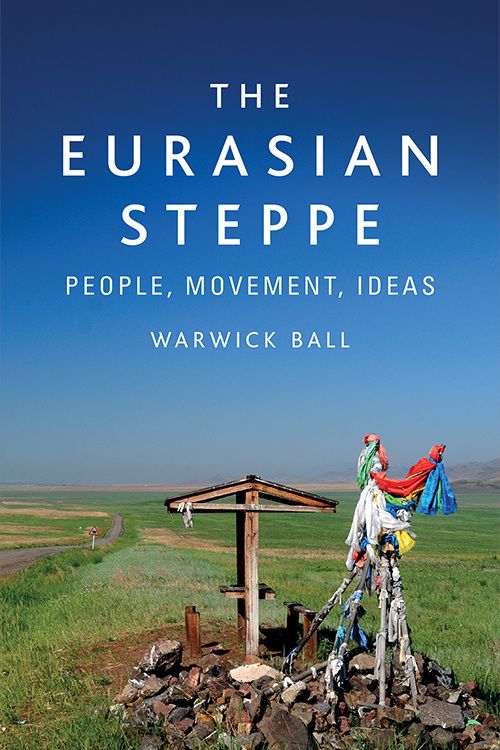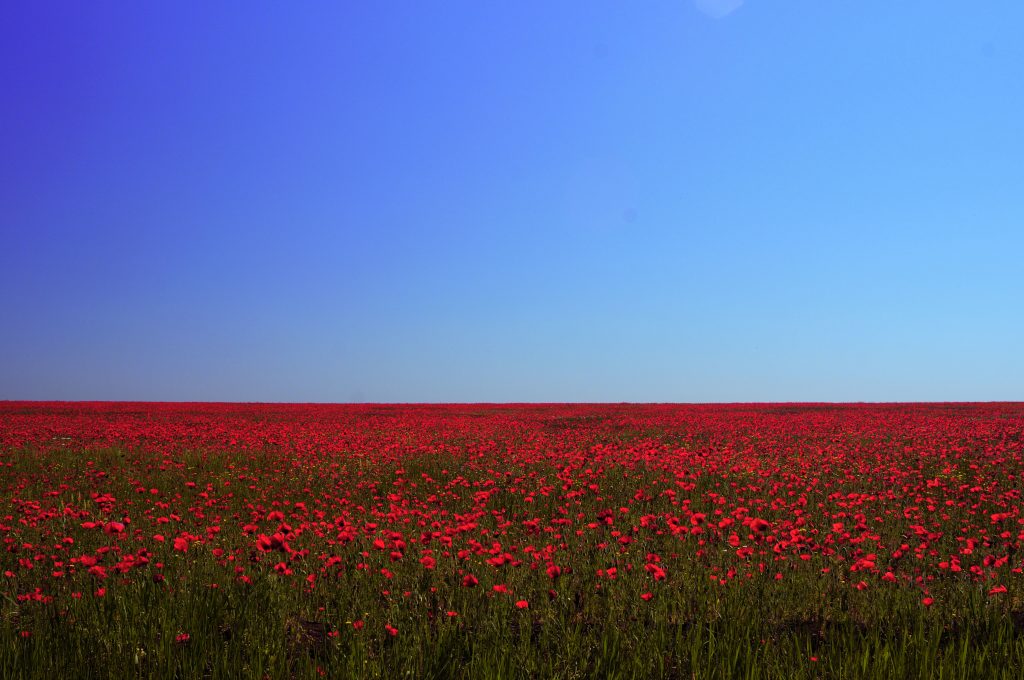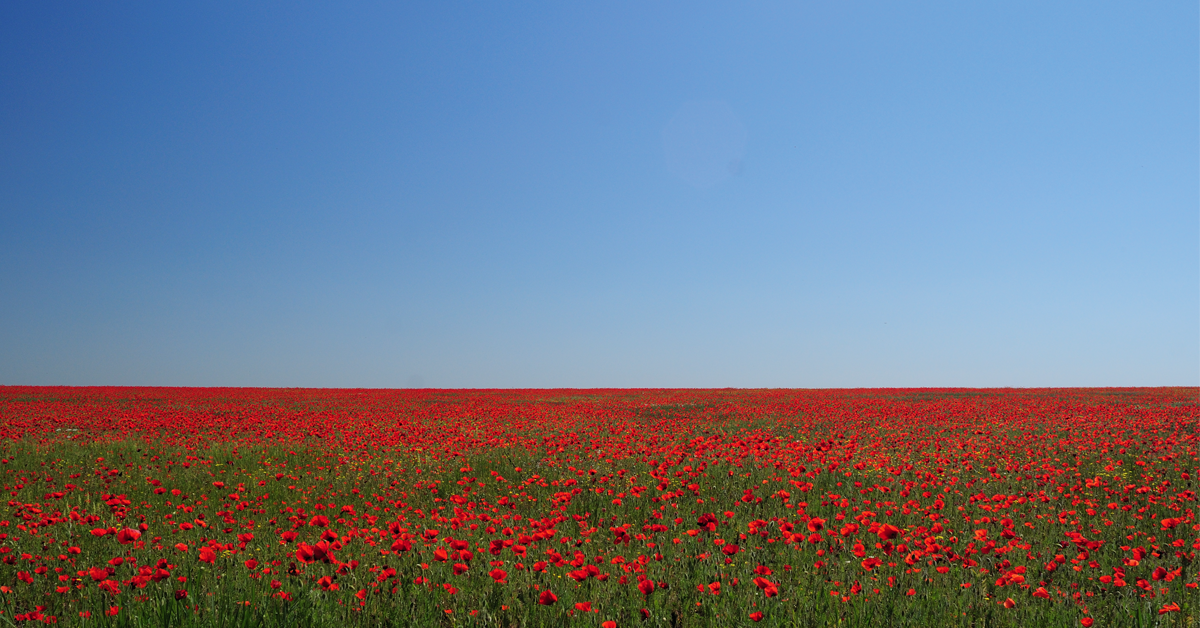
In this interview, author and archaeologist Warwick Ball discusses his travels and research that led to his new book, The Eurasian Steppe.
Can you tell us a bit about The Eurasian Steppe?
The book started life many years ago as the fourth volume in a quartet looking at how peoples originating in Asia impacted on and in many ways altered the destiny of Europe. The first three volumes discussed were Arabs, Persians and Turks, while the fourth discussed peoples from the steppe. Since that volume appeared there has been considerably more research and I have done considerably more thinking on the nature of the steppe and how it had moulded Europe since the earliest times; I had also visited more of the places discussed. Hence, while the present book is a development from the former, it is essentially a new work.
What’s going on in the cover image?

Ah, this was the first time I travelled to the remote Republic of Tuva in south Siberia in 2012, an unforgettable experience. The actual photo was taken where the road to the remarkable archaeological site of Arzhan (on the plain in the distance) branched off from the main road to Kyzyl, the capital of Tuva, marked by the shrine at a grave on the right. Later that day I was given a private tour around the extraordinary gold and other treasures in the Museum at Kyzyl that had been recovered from Arzhan.
What was the most exciting thing about writing The Eurasian Steppe for you?
Undoubtedly travelling to some of the remotest parts of the Eurasian steppe – both the European and Asian parts – in researching this book. Two events were particularly satisfying. In September 2016 I travelled the short distance from Beijing to the end of the Great Wall at Shanhaiguan on the Yellow Sea – thus enabling me to draw an unbroken line of land travel (with many diversions) across Eurasia from the Atlantic to the Pacific (albeit not in one go of course, but undertaken over the course of nearly 50 years). And in October 2019 I stepped off the train at Vladivostok, the conclusion of an epic three weeks in Russia (the most recent visit of many), mainly in Siberia, mainly by train (with stops).
Did you discover anything particularly strange or surprising?
An Ottoman minaret attached to a Polish Catholic cathedral at Kamyanets-Podolsky in Ukraine perhaps? But probably discovering the Kalmyks. The Kalmyks are a Mongolian people who migrated from China to the southern Russian steppe in the seventeenth century and, like most Mongolians, practice Tibetan Buddhism. I first visited Elista, capital of the surprising Republic of Kalmykia on the European steppe of Russia in the company of my wife and then 16-year-old younger son in 2008. Following the collapse of the Soviet Union the Kalmyks were given their own Republic within the Russian Federation; the centre of Elista is dominated by Tibetan style temples and pagodas overlooked by a statue of Lenin (who was part Kalmyk), and pictures of both Genghis Khan and the Dalai Lama are seen throughout.
On a separate occasion I had visited a derelict Kalmyk Buddhist temple on the lower Volga, erected in 1818 by Serenjab Tyumen, the Kalmyk commander who led the Kalmyk regiment that spearheaded the victorious Russian entry into Paris in 1814. Few in Europe realise that there is a Buddhist temple commemorating the defeat of Napoleon, and that within the boundaries of Europe there is a Mongolian republic whose official religion is Tibetan Buddhism (and whose national sport is chess!)
Did you get exclusive access to any new or hard-to-find sources?
Not particularly, although being privately conducted around the Museum in Kyzyl when it was closed mentioned above – and allowed to photograph the treasure (normally forbidden) – was quite a privilege.
Your writing is based on your extensive travel and archaeological work – did your research take you to any particularly unexpected places or unusual situations?
An interest in Inner Asia began when carrying out research in Afghanistan in the seventies, experiencing even then some unusual situations (and an active interest in the archaeology of Afghanistan has remained ever since, resulting in, among other books, The Archaeology of Afghanistan published by EUP in 2019). It is difficult to single out any particularly unexpected places (they all were!) but when first visiting western Ukraine in 2014 I was bowled over by two cities (which in fact are marginal to the book): Lviv and Chernivtsi, two of the most ravishing but least known gems in Europe.
Has your research in this area changed the way you see the world today?
Very much so. The idea that Asia and Europe are perceived as separate constructs, and with it Asian and European civilisations and peoples as fundamentally different, I view to be not only misleading, but ultimately just not true. Peoples from Asia such as Mongolians, Turks, Bulgarians, Hungarians, Tatars, Jews, Finns and many others form an integral part of Europe, while others such as Persians or Arabs have fundamentally changed Europe.
The Eurasian Steppe is highly illustrated with your own photos – do you have a favourite you’ve taken?

Oh dear, a poser – and a favourite one day might not be the next. But that sea of poppies stretching to the horizon on the Crimean steppe (Figure 1.10) is certainly startling. But perhaps that photo of Malevich’s Black Square in the Tretyakov in Moscow (Figure 13.19): I remember staring in fascination at this iconic art work the first time I saw it, and I have had a passion for early twentieth century Russian art since.
What’s next for you?
There are still some of the results of my excavations in Iraq in the 1980s hanging over me. My book on the oriental elements in C. S. Lewis’ Narnia stories is being published next year (by OUP New York). And for many years now I have been considering a return to Roman studies: about archaeology, monuments and nationalism, and how European obsession with the Roman Empire still survives in many different forms all around us.
Read an exclusive extract from The Eurasian Steppe in a recent blog post, Scythian Gold.
About the Author

Warwick Ball is a Near Eastern archaeologist and author who spent over twenty years carrying out excavations, architectural studies and monumental restoration throughout the Middle East and adjacent regions. For five years he was founder, editor and Editor-in-Chief of Afghanistan, the journal of the American Institute of Afghanistan Studies published by Edinburgh University Press. Two major academic books, the Archaeological Gazetteer of Afghanistan (Oxford University Press) and The Archaeology of Afghanistan (Edinburgh University Press) were published in 2019.





